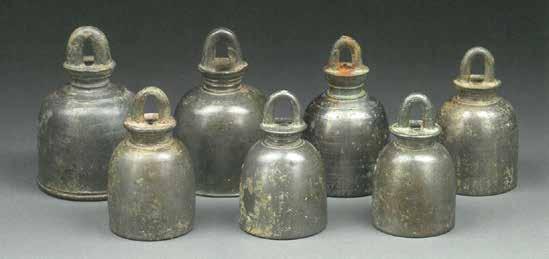
1 minute read
探索佛教工藝
Exploring Artifacts in Buddhist Arts
◎文/節錄自《世界佛教美術圖說大辭典》工藝卷總論 Encyclopedia of Buddhist Arts - Artifacts : Introduction to Buddhist Artifacts ◎圖/佛陀紀念館 Buddha Museum
Advertisement
The Buddhist artifacts, which are regarded as excellent representations of cultural heritage, display not only the achievements of the artists, but also provide insight into Buddhist history. The immense range of Buddhist artifacts come together to represent Buddhist practice and cultivation. Artifacts such as alms bowls, staffs, and robes were everyday items used by monks; others served as objects of devotion or Dharma instruments in temples and monasteries. In the case of figurines and statuettes, they retain both artistic and devotional purposes.
Set of Seven Bells - 編鐘七件
Works of devotion on the part of their creators, Buddhist artifacts also serve as inspiration to Buddhist practitioners.They range from the smallest intricately designed amulet, to incredibly large bells. They are constant reminders of the Buddha’s teachings. Some of the finest examples of Buddhist artifacts are those that bear a direct relationship between devotees and the Dharma. Portable shrines, for example, were objects of devotion in addition to being unequivocal reminders of the Buddhist path to be followed by the practitioner. Prayer wheels, in constant motion, and the counting of prayer beads are important aids in focusing the mind. Musical instruments such as gongs, bells, cymbals, drums, and conches, constitute a form of auditory trigger for spiritual cultivation. They announce daily events such as meal time, or are used for other communicative purposes to connect practitioners with the Buddha’s teachings.
From the above it can be understood that Buddhist artifacts not only retain great visual beauty, but comprise the essence of the beauty of the Dharma within their immense spiritual symbolism. Using or contemplating such artifacts manifests in a strong form of devotion and cultivation. In the Museum of Buddhist Underground Palaces at the Fo Guang Shan Buddha Museum, one can find a great number of Buddhist artifacts that carry great historical significance. This permanent exhibition is an elaborate display of Buddhist art expressed in sacred objects.

